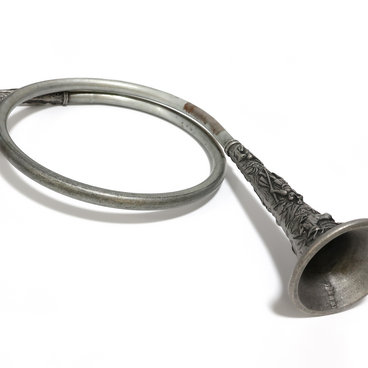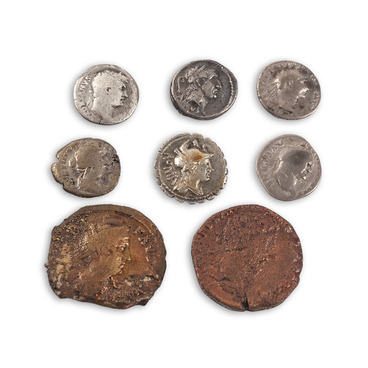In 2008, archaeologists conducted excavations in the vicinity of the village of Mitino in the Guryevsky district of the Kaliningrad region. The researchers managed to locate 259 burials, which they dated to the late 5th to the 14th century. Among the finds were both items typical for the territory of Sambia, i.e. the Kaliningrad peninsula, and unique artifacts as well as rare works of applied art.
The silver saddlebow trim presented in the exhibition was unearthed in 2008. This object was in the grave of a noble warrior of the early 6th century. It was richly decorated with a series of alternating images, which can be regarded as an ancient pictorial code.
The upper part, Heaven, is the dwelling place of the gods. This part of the world is represented by images of horned animals associated with the solar cult. Below is the Middle World, or the world of men, the world of battles, which is shown by a string of armed warriors. Still lower is a row of double spirals. Since ancient times, this pattern in different cultures has been associated with cyclical development. Such a spiral moves simultaneously in two different directions, symbolizing birth and death.
The lowest tier is waterfowl. In many cultures, the cult of migratory waterfowl was closely connected with the ideas of death and rebirth to life. Birds were believed to act as intermediaries between the world of people and the world of spirits. Both waterfowl and water symbolized the Lower World — the world of the dead.
The saddle was made
during the Great Migration of Peoples, a time of movement of various ethnic
groups spanning from the steppes of Mongolia to France, from Scandinavia to
North Africa. As a result of contacts with new peoples who came to the
territory of Europe, there were changes in the burial rites and in the funerary
inventory. At the same time, the burials of clan nobility began to be detached.
These were burials of horsemen in wooden chambers. Each of the burials was
supplemented by the burial of two to four horses, and the remains of saddles
were found at all the sites.


